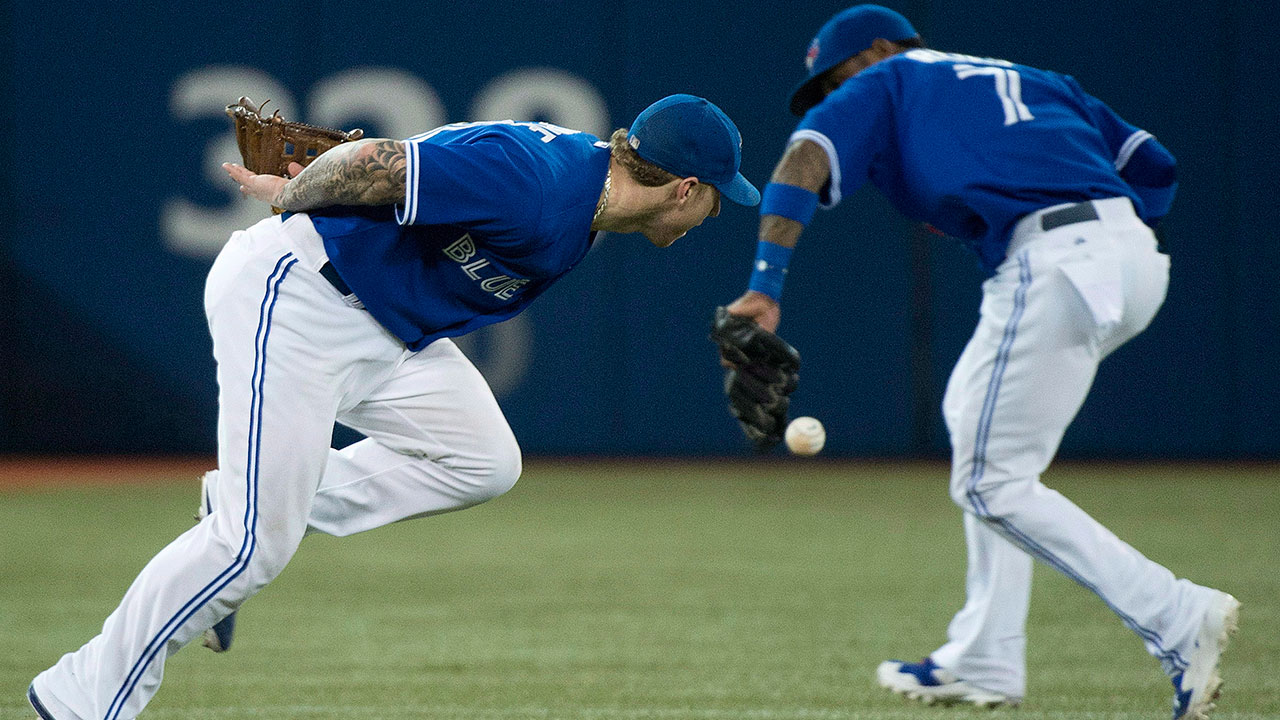TORONTO – The Toronto Blue Jays will be playing on a new artificial surface in 2015, one they believe will be more comfortable and less taxing on their players.
That’s a good thing given the widely-held disdain for the old rug – the AstroTurf 3D installed for the 2010 season – which is often blamed for causing excessive wear and tear on the bodies of those who play on it.
There are some who feel it’s a deterrent for free agents, and others are adamant the synthetic field contributes to the team’s health issues, the oft-injured Brett Lawrie, traded Friday to the Oakland Athletics as part of the package for Josh Donaldson, among them.
“It treats my body kind of silly and throws it off,” he said this week during a conference call with Bay Area media, adding later: “I really do feel that turf has a lot to do with (all the injuries). I’m wound tight, my body is wound tight just being a high-energy guy and being a quick-twitch guy, so for me being on that turf and bouncing around and whatnot, I hear people just saying from walking on it or standing on it from opposing teams, ‘Man, we were only in there for three days but my body feels terrible.’
“When you hear those sorts of things and you realize we’re on that stuff every single day, I can only point the finger at it because it makes sense. I really do feel when I go on the road and I play on grass and dirt and whatnot, I feel better. Once you get back into five, six, seven games in a row on that stuff, your body just gets thrown through a bit of a loop. I feel like this is a big step forward for me into being healthy and staying on the field.”
The coming season will determine whether or not the switch to natural grass really makes a difference on that front for Lawrie, and the Blue Jays can only hope their new surface provides similar potential benefits.
Installation of the new AstroTurf 3D Xtreme, the next generation of their old carpet with redesigned grass fibres, is scheduled to start Jan. 23 and should be completed by early March. While it’s far from ideal, the new rug is slated to serve as a stop-gap until Rogers Centre can be retrofitted for natural grass, a process slated for 2018.
Finding the Toronto Argonauts a new home is a key element within that timeline, and the CFL club may yet end up at BMO Field, where they were set to move before funding issues scuttled a plan to bring them over. It’s the most sensible landing spot for them, and one school of thought is logic will rule the day and the stadium’s upcoming renovations will allow it to accommodate a CFL playing field.
Until all that gets settled, the Blue Jays are trying to do the next best thing for their players, and the new turf is it.
“Our turf was starting to get worn down,” says Kelly Keyes, vice-president, building services for the Blue Jays. “(The new one) will be softer for the players, it will be better for their bodies, and the ball won’t roll as fast, it will be much slower.”
The difference won’t be only in going from one field to another, but also in the way the new carpet is laid down and handled.
The previous surface ended up hardening over time because of the way it compresses while rolled up for Rogers Centre’s other events, causing the grass blades to flatten out. Compounding matters, the mixture of sand and rubber crumbs poured on the turf to make it springier only added to the weight, increasing the pressure on it while sitting and especially while rolled up.
A switch this past season to a rubber crumb only mixture helped for a little while, but the surface by then had seen better days.
“The sand adds a lot of weight to it,” explained Keyes. “Our big rolls ranged from 11,000-12,000 pounds.”
This time the rolls should weigh about 6,000 pounds. With approximately half of the pressure and a slightly bigger crumb size, the Blue Jays hope the surface won’t compress as much.
“In theory, that should make it a little softer and last longer,” Keyes said.
One problem the Blue Jays simply won’t be able to resolve is the toll the frequent placement and removal takes on the turf.
The club’s selection of artificial surfaces is limited by the need for a portable system. Prior to 2010, the Blue Jays for five years used a tray system field made up of roughly 2,000 pieces, and players regularly found odd seams and dead spots that changed after every conversion.
The new carpet – 145 rolls, the longest piece measuring 170 feet – will be similar to the old carpet put together with basically the same seaming plan.
“This allows us to continue to be multipurpose,” said Keyes. “The fibre will be a blend of two different greens so it looks a little sharper and the blades are supposed to be stronger, they shouldn’t fall down as quickly as they do right now.”
The key matter, however, is whether it makes playing at Rogers Centre less physically taxing for Blue Jays players, and a real reading of that won’t come until well into next season.
The surface won’t ever be as forgiving as natural grass, but it needs to be better than the light padding over concrete it became.
As for the old surface, it will be returned to AstroTurf so it can be recycled and live on in one of the other carpeting products the manufacturer makes. Few who played on it will be sad to see it go, and many will be eager to wish it good riddance.








